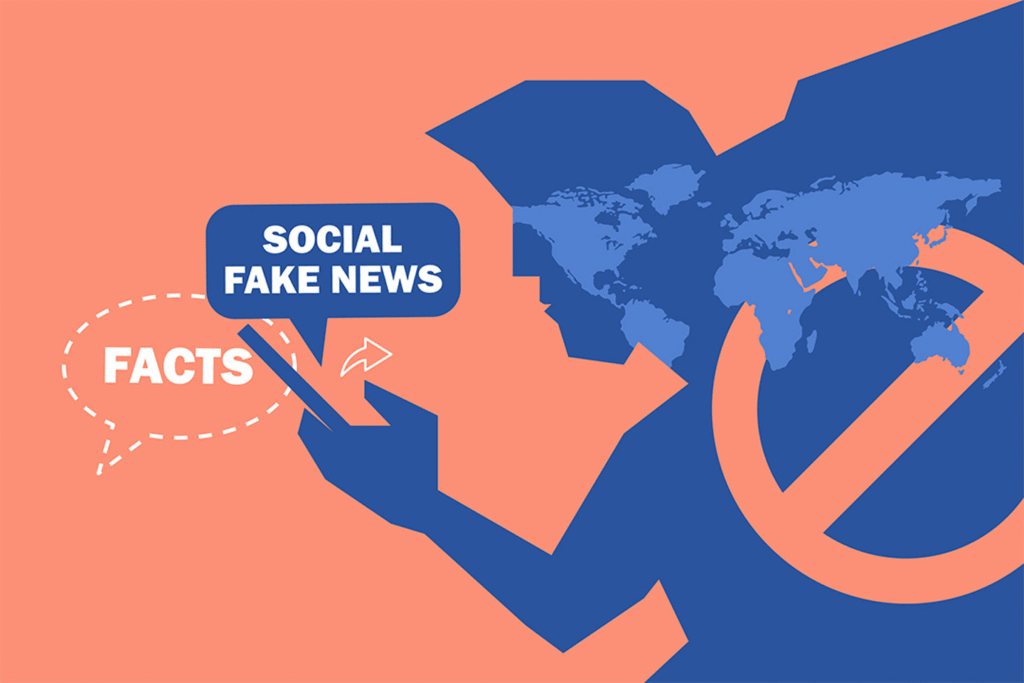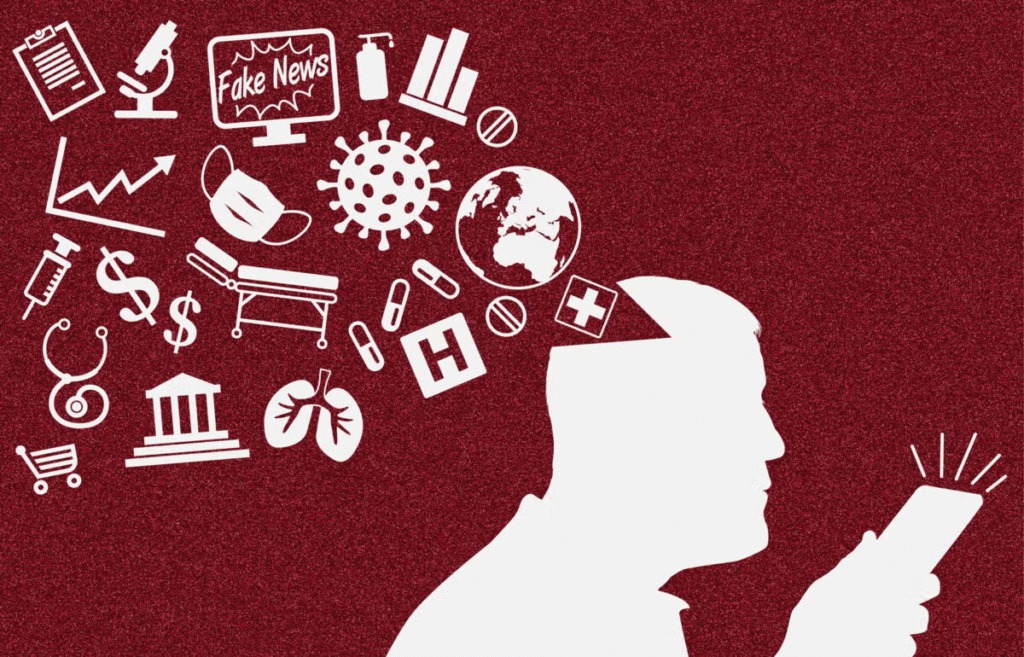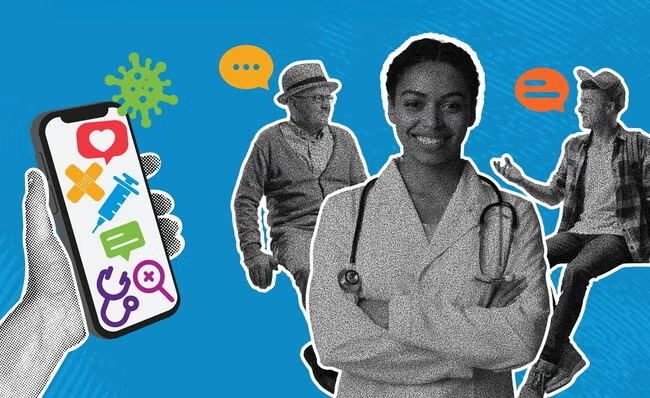Introduction
In an era where digital connectivity has become ubiquitous, Bangladesh faces a critical challenge that threatens public health outcomes: the rapid proliferation of health misinformation across social media platforms. With over 84% of internet users actively engaging on social networking sites, the country has witnessed an alarming trend where false health information spreads faster than verified medical guidance (Asia Foundation, 2024). This phenomenon, which intensified dramatically during the COVID-19 pandemic, has created a dangerous public awareness gap that undermines healthcare initiatives, erodes trust in medical institutions, and poses significant risks to population health.
The digital landscape in Bangladesh presents a unique paradox. While social media platforms offer unprecedented opportunities for health education and awareness, they simultaneously serve as breeding grounds for misinformation that can have fatal consequences. Understanding this duality and developing effective countermeasures has become an urgent priority for public health authorities, policymakers, and civil society organizations.

The Social Media Landscape in Bangladesh
Bangladesh's social media ecosystem is dominated by several key platforms that have become primary sources of information for millions. Recent research indicates that Facebook leads with a penetration rate of 90.73%, followed closely by Messenger at 90.32%, YouTube at 85.48%, WhatsApp at 55.47%, Instagram at 52.42%, and TikTok at 12.30% among active users (ResearchGate, 2025). This widespread adoption has fundamentally transformed how Bangladeshis access and share health-related information.
The pervasiveness of these platforms means that health information, whether accurate or false, can reach millions within hours. During the COVID-19 pandemic, this rapid dissemination capability proved to be both a blessing and a curse, as public health messages competed with an overwhelming tide of misinformation and conspiracy theories.
The Pandemic as a Catalyst: COVID-19 Misinformation Crisis
The COVID-19 pandemic exposed the vulnerability of Bangladesh's digital information ecosystem to health misinformation. Studies reveal that vaccine hesitancy rates reached alarming levels, with research indicating that between 32.5% and 46.2% of the adult population exhibited hesitancy toward COVID-19 vaccination, largely influenced by misinformation circulating on social media platforms (Alam et al., 2021; Islam et al., 2021).
A cognitive behavioral analysis focusing on Bangladesh found that personal connections significantly influenced the propagation of vaccine misinformation. When false information was shared by trusted contacts, individuals were substantially more likely to believe and further disseminate it, creating cascading waves of misinformation throughout social networks (Scientific Reports, 2023). This finding underscores a critical vulnerability in Bangladesh's information ecosystem: the power of personal relationships to override factual accuracy.
The mental health impact of pandemic-related misinformation was equally concerning. Research documented that exposure to COVID-19 myths and false information on social networks was significantly associated with anxiety symptoms, with 43.9% of social media users experiencing depression, 30.9% experiencing anxiety, and 23.8% experiencing stress ranging from mild to extremely severe levels (PLOS Mental Health, 2024).
The Education-Based Knowledge Gap
Central to understanding health misinformation acceptance in Bangladesh is the education-based knowledge gap. Studies consistently demonstrate that individuals with lower educational attainment are significantly more likely to accept health misinformation, a pattern that intensifies with increased exposure to false information (Knowledge Gap Hypothesis studies). This gap is mediated by three critical factors:
Issue Knowledge Deficit: Lower health literacy prevents individuals from critically evaluating medical claims, making them susceptible to pseudoscientific assertions and unverified remedies.
Information Processing Limitations: Less systematic processing of health information means that emotional appeals and sensational claims often override factual evidence in decision-making.
Media Dependency Patterns: Heavy reliance on social media as a primary information source, coupled with limited access to credible health resources, creates an environment where misinformation thrives unchallenged.
The Mechanisms of Misinformation Spread
Research has identified three dominant motivations driving the spread of fake health news in Bangladesh:
Entertainment Motives: Users share sensational health claims for their shock value or entertainment potential, often without verifying accuracy. Dramatic stories about miracle cures or health conspiracies generate engagement and social validation.
Ignorance: Many individuals unknowingly propagate false information, genuinely believing they are helping friends and family by sharing what they perceive as important health updates.

Altruism Motives: Paradoxically, the desire to protect loved ones often leads people to share unverified health warnings, creating a well-intentioned but harmful cycle of misinformation dissemination.
The Rural-Urban Divide
The public awareness gap manifests differently across urban and rural contexts in Bangladesh. Urban populations generally have better access to healthcare professionals and digital literacy resources, yet they also face higher volumes of conflicting information across multiple platforms. Rural communities, conversely, often rely on limited information channels, making them vulnerable to localized misinformation campaigns that spread through WhatsApp groups and Facebook communities without effective fact-checking mechanisms.
This geographic disparity in information access and verification capabilities means that health misinformation impacts different communities in distinct ways, requiring tailored intervention strategies rather than one-size-fits-all approaches.
Barriers to Effective Health Communication
Systematic reviews of health communication during epidemics and pandemics have identified critical barriers that enable misinformation to flourish in Bangladesh:
Misinformation and Distrust: A fundamental erosion of trust in official health sources, exacerbated by inconsistent messaging and perceived institutional failures, creates fertile ground for alternative narratives.
Limited Collaboration: Insufficient coordination between government health agencies, healthcare providers, media outlets, and community organizations results in fragmented messaging that misinformation exploits.

Messaging Inconsistency: Contradictory statements from different authorities or changing guidelines confuse the public, making them more receptive to simplified (but often false) explanations on social media.
Inadequate Digital Literacy: A significant portion of the population lacks the critical thinking skills necessary to evaluate online health information, distinguish credible sources from unreliable ones, or recognize manipulation techniques.
The Trust Paradox
One of the most significant findings in recent research is the mediating role of trust in health knowledge adoption. Studies employing the Elaboration Likelihood Method and Extended Parallel Process Model have demonstrated that trust differentially impacts health knowledge adoption intention versus actual behavior, explaining why significant gaps often exist between what people intend to do and what they actually do regarding health decisions.

When individuals trust a source, they are more likely to adopt health knowledge, but this trust can be misplaced when applied to unverified social media content. Conversely, legitimate health authorities often struggle to build the same level of trust that influential social media personalities command, creating a dangerous imbalance in the information ecosystem.
Public Health Impacts and Consequences
The consequences of health misinformation in Bangladesh extend far beyond individual health decisions. Documented impacts include instances of mob violence and hate crimes fueled by false information on social media, disruption of vaccination campaigns, increased preventable disease transmission, unnecessary panic and stockpiling behaviors during health crises, and erosion of public confidence in healthcare systems (Userhub, 2025).
Perhaps most concerning is the potential for misinformation to reverse decades of public health progress. When significant portions of the population reject evidence-based medical interventions based on false information encountered online, the entire community becomes more vulnerable to disease outbreaks and health emergencies.
Mitigation Strategies
Addressing the health misinformation crisis in Bangladesh requires a comprehensive, multi-stakeholder approach:
Enhancing Digital Health Literacy: Implementing widespread educational initiatives that teach critical evaluation of online health information, starting in schools and extending through community programs.
Strengthening Fact-Checking Mechanisms: Establishing robust, culturally appropriate fact-checking systems that can rapidly identify and counter health misinformation in Bengali and other local languages.
Engaging Trusted Community Members: Leveraging the influence of respected community leaders, religious figures, and healthcare providers to disseminate accurate health information through trusted channels.
Improving Health Communication Strategies: Developing clear, consistent, culturally sensitive messaging that addresses common misconceptions while avoiding polarization or condescension.
Platform Accountability: Working with social media companies to implement effective content moderation policies that limit the spread of dangerous health misinformation while respecting free expression.
Empowering Healthcare Professionals: Training frontline healthcare workers in digital communication strategies and supporting their active participation in online health discussions.
The Path Forward
The battle against health misinformation in Bangladesh is not simply about correcting false information; it represents a fundamental challenge to build a more resilient, informed, and health-literate society. Success requires sustained commitment from government agencies, healthcare institutions, educational systems, media organizations, and civil society.
As digital technologies continue to evolve and social media platforms introduce new features and formats, the strategies to combat misinformation must similarly adapt. The ultimate goal is not to restrict information flow but to ensure that accurate, evidence-based health information is more accessible, trustworthy, and compelling than the misinformation that currently proliferates.
Conclusion
The growing public awareness gap regarding health misinformation on social media represents one of the most pressing public health challenges facing Bangladesh today. With significant portions of the population exposed to and influenced by false health information, the stakes could not be higher. However, by understanding the mechanisms through which misinformation spreads, the factors that make individuals vulnerable to it, and the most effective countermeasures, Bangladesh can develop a comprehensive strategy to protect public health in the digital age.
The COVID-19 pandemic has provided crucial lessons about the dangers of health misinformation and the urgent need for coordinated action. Moving forward, Bangladesh must prioritize digital health literacy, strengthen health communication systems, build trust in credible health sources, and create an information ecosystem where facts prevail over fiction. Only through such comprehensive efforts can the country bridge the public awareness gap and ensure that social media becomes a force for health promotion rather than a vector for dangerous misinformation.
References
Alam, M. Z., Hoque, M. R., Hu, W., & Barua, Z. (2021). Factors influencing the adoption of mHealth services in a developing country: A patient-centric study. International Journal of Information Management, 50, 128-143.
Asia Foundation. (2024). Development Letters: Misinformation and Disinformation. Retrieved from https://asiafoundation.org/wp-content/uploads/2024/07/Development-Letters-Misinformation-and-Disinformation.pdf
Haque, M. M., Islam, S., Rahman, M. A., & Hossain, M. A. (2020). Social media rumors in Bangladesh: Themes, sources, and aims. Journal of Digital Media & Policy, 11(2), 181-199.
Islam, M. S., Kamal, A. H., Kabir, A., Southern, D. L., Khan, S. H., Hasan, S. M., ... & Seale, H. (2021). COVID-19 vaccine rumors and conspiracy theories: The need for cognitive inoculation against misinformation to improve vaccine adherence. PLOS ONE, 16(5), e0251605.
PLOS Mental Health. (2024). COVID-19's myths, facts, concerning and obstinate posts on social network, and the mental health status of social network users in Bangladesh. Retrieved from https://journals.plos.org/mentalhealth/article?id=10.1371/journal.pmen.0000014
ResearchGate. (2025). Social media as a tool of communication in Bangladesh: Pattern, growth and challenges. Retrieved from https://www.researchgate.net/publication/390452323
Scientific Reports. (2023). A cognitive behaviour data analysis on the use of social media in global south context focusing on Bangladesh. Scientific Reports, 13, Article 4156. https://doi.org/10.1038/s41598-023-30125-w
Userhub. (2025). Health misinformation on social media in Bangladesh: Public health impact and mitigation strategies. Retrieved from https://userhub.com.bd/publications/health-misinformation-social-media-bangladesh-public-health-impact-mitigation/

